In the realm of grocery retail, ensuring the safety of customers, employees, and products is paramount. This month’s focus on grocers’ insurance and safety tips delves into crucial aspects of risk management, liability coverage, and proactive measures to prevent accidents and maintain a secure environment for all.
From proper food handling and storage techniques to regular equipment maintenance and customer safety protocols, we’ll explore the comprehensive strategies that grocers can implement to mitigate risks, protect their assets, and foster a culture of safety within their establishments.
Grocers Insurance Safety Tips of the Month
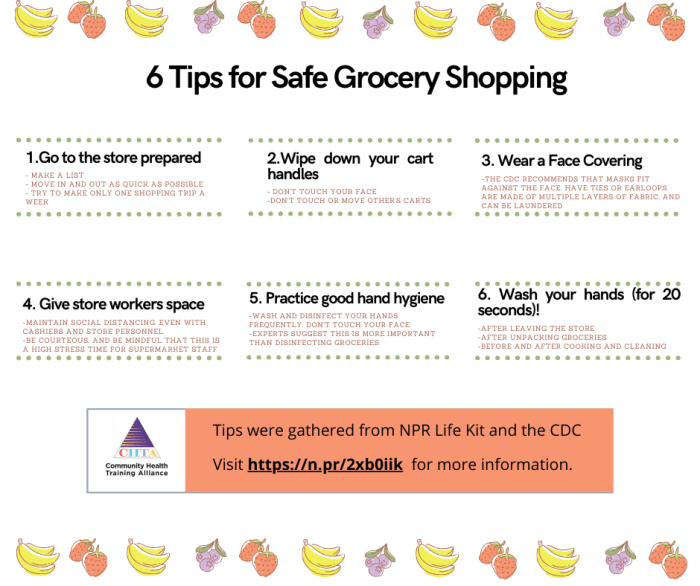
Regular safety inspections are paramount for grocery stores, ensuring adherence to food handling practices, equipment maintenance, and customer safety standards. These inspections help identify potential hazards and rectify them before they lead to accidents, injuries, or legal liabilities.
Key Areas to Inspect
Grocery store owners should conduct regular safety inspections, paying particular attention to the following areas:
- Food Handling Practices: Assess food storage, preparation, and handling procedures to ensure compliance with health regulations. Inspect food storage areas for proper temperature control and organization, and check for signs of spoilage or contamination. Review food preparation practices to ensure adherence to hygiene standards, including handwashing, sanitization of surfaces, and proper cooking techniques.
- Equipment Maintenance: Inspect equipment regularly for signs of wear and tear, leaks, or malfunctions. Ensure that all equipment is properly maintained and calibrated according to manufacturer guidelines. Pay special attention to refrigeration units, freezers, and cooking appliances, as these are critical for food safety and customer health.
- Customer Safety: Evaluate the store layout and signage to ensure clear and unobstructed pathways for customers. Check for potential trip hazards, such as uneven flooring, loose mats, or cluttered aisles. Inspect lighting fixtures to ensure adequate illumination throughout the store. Regularly review emergency procedures, including fire drills and evacuation plans, and ensure that staff members are adequately trained.
Food Handling and Storage
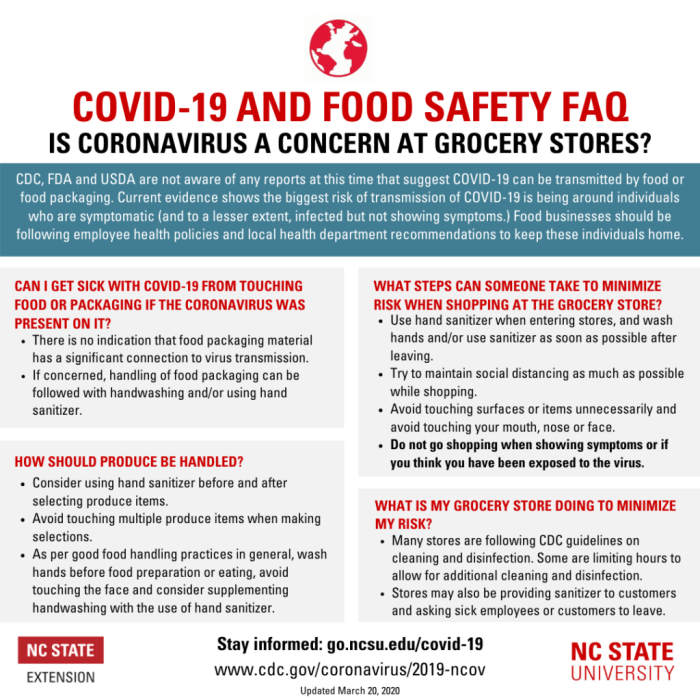
Ensuring the safety of food products is crucial in the grocery industry. Proper handling and storage practices are essential to minimize the risk of contamination and foodborne illness. Implementing these practices helps maintain the quality of food items, prevent spoilage, and protect consumers from potential health hazards.
Receiving Food Items
Upon receiving food deliveries, it’s important to inspect the condition of the items thoroughly. Check for any signs of damage, spoilage, or temperature abuse. Ensure that perishable items are properly refrigerated or frozen immediately to maintain their quality and safety.
Storage and Rotation
Proper storage is key to preserving the quality and safety of food products. Organize food items in a manner that prevents cross-contamination. Store raw meat, poultry, and seafood separately from ready-to-eat foods to avoid potential contamination. Implement the FIFO (First In, First Out) method to ensure older items are used before newer ones, minimizing the risk of spoilage.
Temperature Control
Maintaining proper temperatures is essential to prevent the growth of harmful bacteria. Keep perishable items at or below 40°F (4°C) to inhibit bacterial growth. Regularly monitor and adjust refrigerator and freezer temperatures to ensure they are operating within the recommended ranges.
Food Preparation
When preparing food, it’s crucial to maintain a clean and sanitary work environment. Wash hands thoroughly before handling food and frequently throughout the preparation process. Use separate cutting boards and utensils for raw meat, poultry, and seafood to prevent cross-contamination.
Cook food to the proper internal temperature to eliminate harmful bacteria.
Cleaning and Sanitation
Regular cleaning and sanitation of work surfaces, equipment, and utensils are essential to prevent the buildup of bacteria and potential contamination. Use approved sanitizing solutions and follow proper cleaning procedures to ensure a hygienic work environment.
Customer Safety

Ensuring the safety of customers is a top priority for any grocery store. By implementing proactive measures and educating customers, grocers can create a safe and welcoming environment for all.
Providing a clean and well-maintained store is essential for customer safety. Regular cleaning and maintenance help prevent accidents and ensure a sanitary environment. Proper lighting is also crucial, as it improves visibility and reduces the risk of slip-and-fall accidents.
Signage and Communication
Clear and informative signage is vital for customer safety. Signs should be placed strategically throughout the store to guide customers and provide important information. For example, signs can indicate the location of restrooms, exits, and customer service desks. Additionally, signs can be used to communicate food safety information and handling practices.
Slip-and-Fall Prevention
Slip-and-fall accidents are a common hazard in grocery stores due to spills, wet floors, and uneven surfaces. To prevent these accidents, grocers should implement regular cleaning and maintenance schedules. Additionally, they can use anti-slip mats and signage to warn customers of potential hazards.
Customer Education
Educating customers on food safety and handling practices is crucial for preventing foodborne illnesses. Grocers can provide educational materials, such as brochures and posters, to inform customers about proper food handling and storage techniques. Additionally, they can conduct workshops and classes to teach customers about food safety practices.
Emergency Preparedness
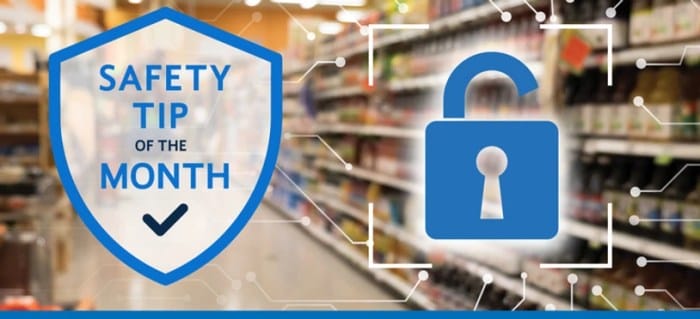
In the fast-paced world of grocery stores, it is essential to be prepared for unexpected events. A comprehensive emergency preparedness plan ensures the safety of customers, employees, and the store itself. This plan should encompass fire safety measures, evacuation procedures, and a structured response to natural disasters.
Fire Safety
Fire hazards are a major concern in grocery stores, given the presence of flammable materials and equipment. Fire safety measures include:
- Installing and maintaining smoke detectors and fire alarms throughout the store.
- Providing fire extinguishers in accessible locations and training employees in their proper use.
- Conducting regular fire drills to familiarize employees with evacuation procedures.
- Storing flammable materials in designated, secure areas away from potential ignition sources.
- Maintaining proper ventilation to prevent the buildup of hazardous fumes.
Evacuation Procedures
In the event of an emergency, a well-defined evacuation plan ensures the swift and orderly exit of customers and employees. Key elements of evacuation procedures include:
- Establishing designated evacuation routes and exits, clearly marked with signage.
- Training employees to assist customers in evacuating safely, especially those with disabilities or limited mobility.
- Coordinating with local emergency services to ensure prompt response and assistance.
- Conducting regular evacuation drills to ensure familiarity with procedures and to identify areas for improvement.
Response to Natural Disasters
Natural disasters, such as earthquakes, floods, or hurricanes, can pose significant risks to grocery stores. Preparing for these events involves:
- Developing a comprehensive disaster response plan that Artikels specific actions to be taken before, during, and after the event.
- Securing the store by boarding up windows and doors, and moving valuable items to higher ground in case of flooding.
- Stockpiling emergency supplies, including food, water, first aid kits, and communication devices.
- Training employees in disaster response procedures and ensuring they have access to necessary resources.
- Coordinating with local authorities and emergency services to stay informed about impending disasters and to receive assistance if needed.
Safety Culture
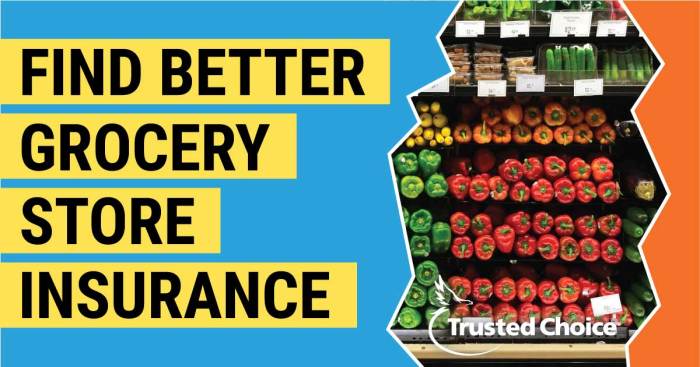
A strong safety culture in a grocery store is characterized by employee engagement, open communication, and continuous improvement. It emphasizes the importance of safety as a core value and creates an environment where employees feel empowered to identify and address potential hazards, report incidents, and suggest improvements.
Fostering a Positive Safety Culture
To foster a positive safety culture, grocery stores can implement several strategies:
- Leadership Commitment: Top management must demonstrate a genuine commitment to safety by actively promoting it, allocating resources, and setting clear expectations.
- Employee Engagement: Encourage employees to take ownership of safety by involving them in decision-making, providing training, and recognizing their contributions to safety.
- Open Communication: Establish a culture where employees feel comfortable reporting incidents, near-misses, and safety concerns without fear of retaliation.
- Continuous Improvement: Regularly review safety performance, identify areas for improvement, and implement corrective actions.
Encouraging Employees to Take Ownership of Safety Practices
Grocery stores can encourage employees to take ownership of safety practices by:
- Training and Education: Provide comprehensive training on safety procedures, hazard identification, and emergency response.
- Empowerment: Empower employees to stop work if they observe an unsafe condition or practice, and to take the initiative to correct hazards.
- Recognition and Rewards: Recognize and reward employees who demonstrate safe work practices and contribute to the overall safety culture.
- Accountability: Hold employees accountable for following safety procedures and addressing safety concerns.
Industry Regulations and Compliance
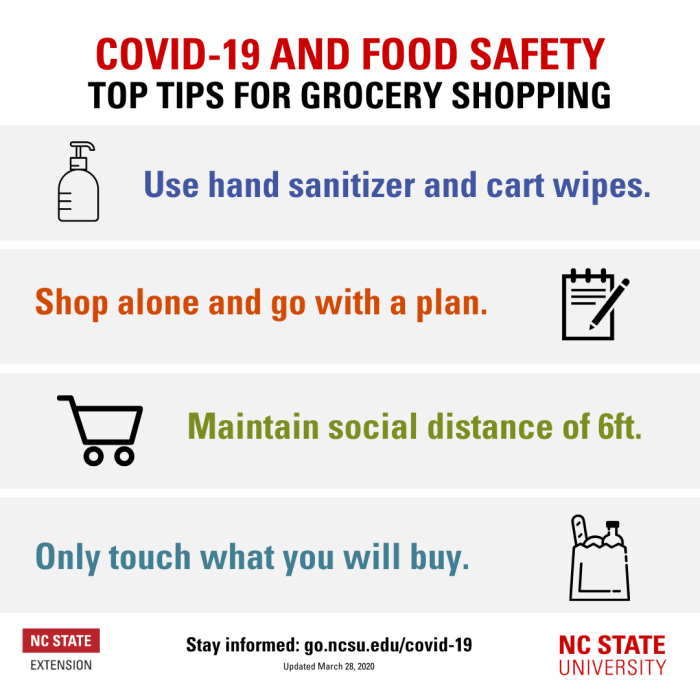
In the grocery industry, adhering to industry regulations and standards is crucial for ensuring food safety, workplace safety, and environmental protection. Complying with these regulations not only safeguards consumers, employees, and the environment but also protects grocers from potential legal liabilities and reputational damage.
Failure to comply with industry regulations can result in severe consequences, including hefty fines, license revocations, and even criminal charges. Additionally, non-compliance can lead to loss of consumer confidence, negative publicity, and damage to the grocer’s reputation, ultimately impacting sales and profitability.
Keeping Up with Changing Regulations
Given the dynamic nature of the grocery industry and evolving regulatory landscape, it is essential for grocers to stay updated on changing regulations. This can be achieved through:
- Regularly reviewing industry publications, trade journals, and government websites.
- Attending industry conferences, workshops, and webinars.
- Consulting with regulatory experts, legal counsel, and industry associations.
- Implementing a comprehensive compliance program that includes regular audits, training, and monitoring.
By staying informed and taking proactive steps to comply with industry regulations, grocers can minimize risks, protect their businesses, and maintain a positive reputation among consumers, employees, and stakeholders.
Continuous Improvement
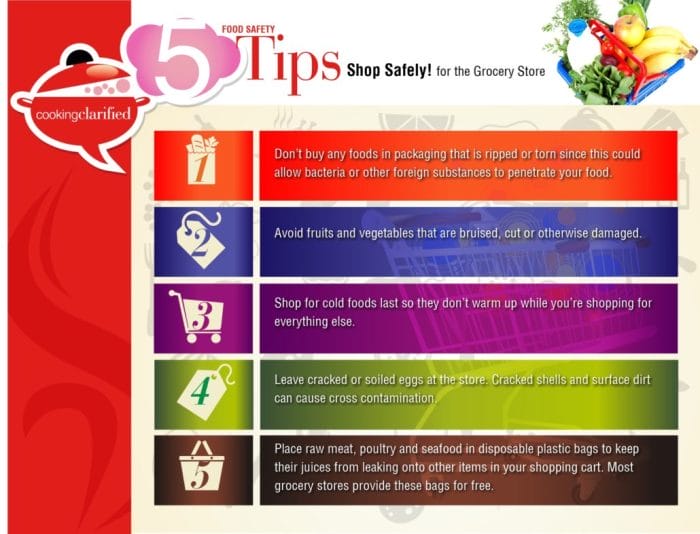
Grocery stores can continuously enhance their safety performance by implementing a structured framework for improvement. This framework should encompass regular audits, feedback mechanisms, and data analysis to identify trends, address safety concerns, and implement effective corrective actions.
Data-Driven Approach
Data plays a pivotal role in driving continuous improvement efforts. By collecting and analyzing data related to safety incidents, near-misses, and employee feedback, grocers can identify patterns and trends that point to potential safety hazards or areas for improvement.
- Incident Reporting: Establish a robust system for reporting safety incidents and near-misses. Encourage employees to report all incidents, regardless of severity, to ensure a comprehensive understanding of safety-related issues.
- Data Analysis: Utilize data analysis tools to identify trends and patterns in safety data. This can include analyzing incident frequency, severity, and root causes, as well as identifying high-risk areas or activities.
- Benchmarking: Compare safety performance against industry benchmarks or best practices to identify areas where improvements can be made.
Feedback Mechanisms
Feedback from employees, customers, and suppliers can provide valuable insights into safety concerns and areas for improvement. Grocers can implement various feedback mechanisms to capture this feedback, such as:
- Employee Surveys: Conduct regular surveys to gather feedback from employees on safety-related issues, concerns, and suggestions for improvement.
- Customer Feedback: Encourage customers to provide feedback on their shopping experience, including any safety-related concerns or suggestions.
- Supplier Audits: Conduct audits of suppliers to assess their safety practices and ensure they meet the grocer’s safety standards.
Corrective Actions
Once safety concerns or areas for improvement have been identified, grocers should take prompt action to address them. This may involve implementing new safety procedures, providing additional training to employees, or making modifications to the physical environment.
- Root Cause Analysis: Conduct root cause analysis to determine the underlying causes of safety incidents and near-misses. This helps grocers address the root causes and prevent similar incidents from occurring in the future.
- Corrective Action Plans: Develop and implement corrective action plans to address identified safety concerns. These plans should include specific actions, timelines, and responsibilities for implementation.
- Monitoring and Evaluation: Regularly monitor the effectiveness of corrective actions to ensure they are addressing the intended safety concerns. Make adjustments as needed to ensure continuous improvement.
Last Point
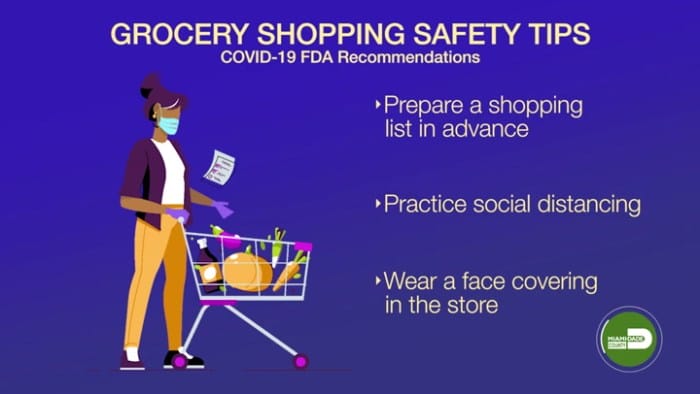
By adhering to industry regulations, investing in comprehensive insurance coverage, and continuously striving for improvement, grocers can effectively safeguard their operations, minimize liabilities, and maintain a positive reputation among customers and stakeholders. Embracing a proactive approach to safety not only ensures compliance but also contributes to the overall success and sustainability of grocery businesses.
FAQ Summary
What are some common types of insurance coverage available to grocers?
Grocers can consider various insurance policies to protect their business, including property insurance for physical assets, liability insurance for legal claims, workers’ compensation insurance for employee injuries, and product liability insurance for claims related to defective products.
How can grocers ensure compliance with industry regulations and standards?
Grocers can stay updated on changing regulations by regularly reviewing industry publications, attending workshops and seminars, and consulting with legal and regulatory experts. Additionally, they should establish a system for monitoring compliance and promptly addressing any identified gaps.
What are some best practices for conducting effective safety training sessions for grocery store employees?
Effective safety training programs should be comprehensive, engaging, and tailored to the specific needs of the grocery store. They should cover topics such as food safety, equipment operation, emergency procedures, and customer service. Training sessions should be conducted regularly and include hands-on exercises, role-playing, and simulations to reinforce learning.



